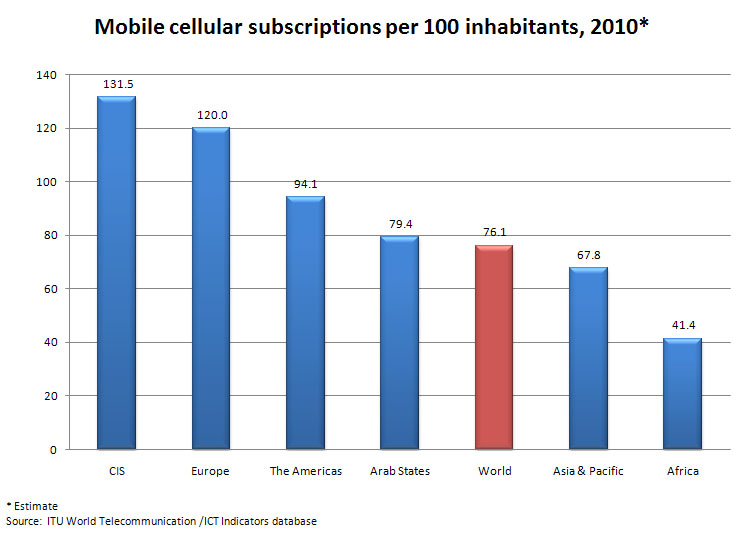 While working on some admin needs for MMM, I came across a question that has had me on a bit of a rabbit trail and a genuine assessment of mobile ministry. The question simply asked, “what is the addressable market?” Included in this answer is understanding who and how many of that “who” can be met by your solution(s).
While working on some admin needs for MMM, I came across a question that has had me on a bit of a rabbit trail and a genuine assessment of mobile ministry. The question simply asked, “what is the addressable market?” Included in this answer is understanding who and how many of that “who” can be met by your solution(s).
As with most things involving Christianity, we speak in terms of biggness – the entire world (all 6-7 billion of us is always the addressable market). The problem is that such a target isn’t just impossible, but its unrealistic. There are very few endeavors which can have an impact across such a large swath of people and regions. Yes, its possible to be a solution that hits a large segment of these (own a cellular carrier or popular social network for example), but that’s far more the exception than the norm. So, the question then becomes, what is the realistic impact (the who and how many of that who) of mobile ministry?
There are roughly 6.9 billion people in the world (at the time of this writing). In respect to the technolgies which fall under the term mobile that 6.9 billion number looks more like 4.2-4.4 billion reachable people. In respect to religious populations, the four major religions have an estimated 4.65-6.17 billion adherants. If you will, just from looking at the numbers, there are more people of faith in four major world religious groups than there are who use mobile. This immediately casts the “entire world is the addressable market” argument out of the range of realism, but does show at a cursory glance that there’s some overlap that should be explored, and some unaddressed persons that might never merit consideration.
How should that be explored is a good question. The good thing about data these days is that its all out there, you’ve just got to do the work towards putting it together. For example, the ITU gives us regional information in reference to mobile subscriptions (estimated, 2007 Report on International Religious Freedom. And that’s truly a large amount of work. Given the task that took me down this rabbit hole, I can truly say that you’ve got to be a bit crazy to push this information together and make some general sense of it. But, its possible to come up with some nuggets that point towards the initial question of “whom the addressable market” actually is.
For example, let’s take a country that we’ve recently posted a few news notes about: Tanzania. According to that 2007 report, there are roughly 30-40 of the people there whom are Christians out of a total population of 37 million. Their current population is abuot 43.2 million, which means that they’ve increased at a rate of roughly 8%. Let’s say that the number of Christians in that country have held at 40% and that would give us 17.3 million Christians and 25.9 million people of other faith traditions. About 1.6% of the population (roughly 670,000) use the Internet. We know from the 2009 East and Southern Africa Telecommunications Report that Tanzania is one of several countries whom are expected to see a mobile penetration rate of 100% by 2013 (most probably sooner). However, that current use of mobile is still below 50% of the total population. Mapping the religious population on top of this mobile enabled population could mean that no more than 20% of the population would be addressible for mobile ministry (doing very bad and extrapolated guesimation for the sake of the discussion). And that ignores that we’ve not yet looked at the economic, literacy, or other factors which may influence the use, impact, further mobile and the potential addressable population just in that area.
That 4.2-4.4 billion number for mobile only speaks in terms of the fact that there is some measurable unit of use. It doesn’t (and cannot) speak towards consistent nor a specific type of use. It doesn’t even identify what the best targets are. All of this needs to be broken down into reachable gains. Its as we’ve said at many points, contextulization and cross-functional knowledge plays a bigger part in understanding the role of mobile and the impacts to digitial faith behaviors than just casting a net out and hoping to catch an entire world of people.
Some have prescribed taking your addressable market in the filter of what technology window is best to meet them. Is it Facebook, a mobile application, an SMS service? You’ve got to do the math and figure out if your realistic addressable market is attainable. And if so, then that’s the part of the global body of faith that you run towards. Whatever it is that is realistic for you to run for, that’s where you become one of many voices in mobile speaking to the need for digital faith endeavors to direct direct people whose lives have intersected at faith and mobile/web technologies. No, this doesn’t get all 6.9 billion people, but it does keep over-zealousness from making you discouraged, or worse, misdirected to the conditions of spiritual and technological needs to those in your immediate, and not so immediate, vicinity.